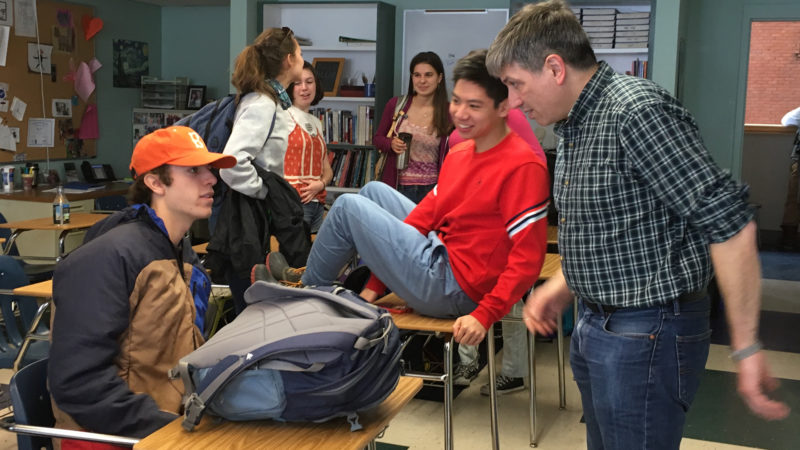UMF professor visits Astrophysics class
Astrophysics students welcomed Chris Magri, Astronomy and Physics professor at University of Maine Farmington, to class today. Dr. Magri discussed his research involving RADAR imaging of asteroids.
Dr. Magri reviewed asteroid study missions that are currently underway, including OSIRIS-REx (launched last year to take samples of the asteroid Bennu and return to Earth), and Psyche (launching in 2022 to orbit a metallic asteroid). Researchers hope that Psyche will provide insights into how planets form. The class was also interested in discussing Near Earth Asteroids (NEAs)—specifically, what are the chances we’ll be hit by one we haven’t seen yet! Dr. Magri also brought a 3D model of the asteroid Betulia that he helped characterize through imaging.
Astrophysics is one of three Upper School electives for which students can obtain college credit at the University of Maine (the others are Advanced Biology and Calculus II).
Dr. Magri uses the world’s most powerful radar facility (the Arecibo Observatory in Puerto Rico) to transmit million-watt microwave beams at asteroids, then measure the faint echoes. These data are used to determine the target’s orbit, size, shape, rotation state, surface topography, and material composition. Recently he and his collaborators have also begun studying the thermal properties of asteroids, using an infrared telescope atop Mauna Kea in Hawaii to measure emitted heat radiation. Computer analysis of these emissions can reveal whether an asteroid’s surface is loose material or solid bedrock.




